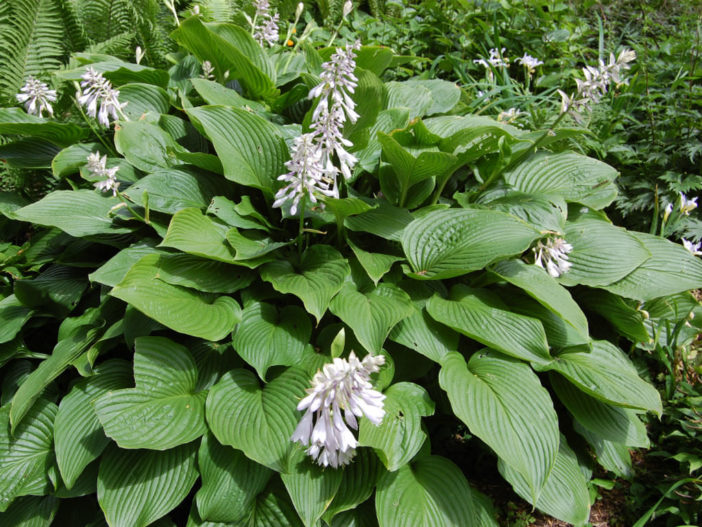Scientific Name
Hosta sieboldiana (Hook.) Engl.
Common Name(s)
Plantain Lily
Synonym(s)
Funkia sieboldiana, Funkia sieboldii, Funkia umbellata, Hosta mira, Niobe sieboldiana, Saussurea sieboldiana
Scientific Classification
Family: Asparagaceae
Subfamily: Agavoideae
Genus: Hosta
Flower
Color: White
Bloom Time: Summer
Description
Hosta sieboldiana is a large clump-forming herbaceous perennial with broad, ovate, blue-green leaves with prominent veining and wavy edges. Flowers are white to pale purple, bell-shaped, held on up to 32 inches (80 cm) tall stems, and appear during summer.

Hardiness
USDA hardiness zones 3a to 8b: from −40 °F (−40 °C) to 20 °F (−6.7 °C).
How to Grow and Care
The color of a Hosta's leaves can help determine how much light it prefers. Blue and deep green varieties like deeper shade, while variegated (striped or splotched bicolor leaves) and yellowish varieties require some morning sun. Harsh afternoon sun can scorch Hosta leaves.
Hostas prefer an inch (2.5 cm) of water a week, whether from rainfall or irrigation. If you water by hand, do so early in the day. Burnt leaf tips and drooping leaves are signals of inadequate water.
Rich, slightly acidic, well-draining soil produces the best Hostas. When preparing the planting hole, add organic matter such as compost, manure, leaf mold, or peat moss. Mix well, and do not let manure contact the roots directly because this can cause discoloration of the leaves.
If the soil is poor, apply a 10-10-10 or 5-10-5 all-purpose fertilizer according to package directions. Otherwise, topdress with well-rotted manure or compost.
Plant Hostas in spring or fall. Bury the crown slightly so it will stay moist, unless the soil is very heavy, in which case leave the crown at ground level. Leave a depression around the plant so that at first watering, the water soaks directly toward the root.
See more at How to Grow and Care for Hostas.
Origin
This species is native to Japan.
Varieties and Cultivars
Links
- Back to genus Hosta
- Plantpedia: Browse flowering plants by Scientific Name, Common Name, Genus, Family, USDA Hardiness Zone, or Origin
Photo Gallery
Click on a photo to see a larger version.




